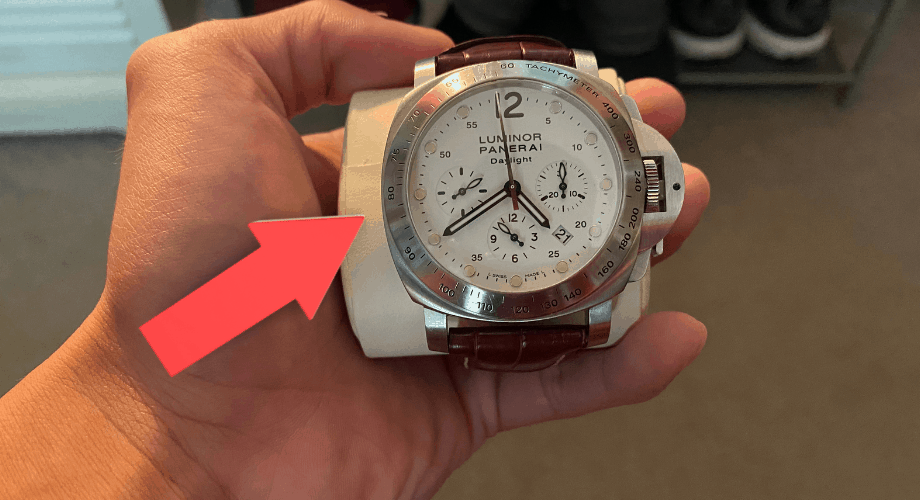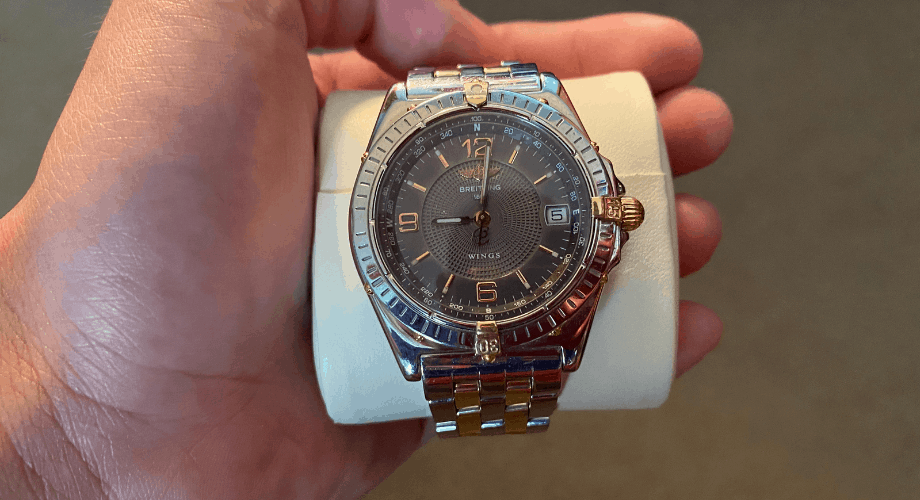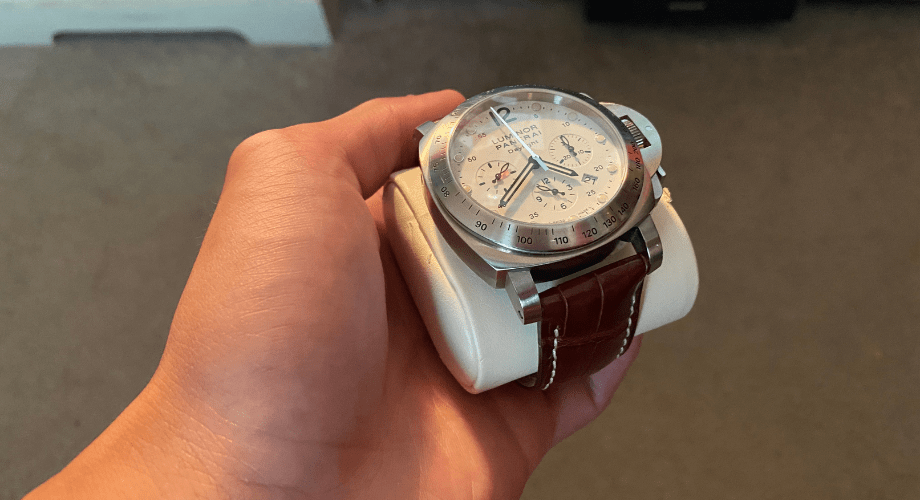
When I first got my Breilings “Wings” watch, I wondered what the ring was on the outside of the case, and I had no idea what it was called. I played around with it and rotated it, but I didn’t know its full purpose. Nonetheless, after I did my research and educated myself more, I finally understood what a watch bezel was.
A watch bezel is the outer ring on a watch that keeps the see-through crystal in place and frames the dial. Watch bezels are usually made of metal or ceramic, and specialized watch bezels with numbered markings or engravings are useful for tracking specific times or measurements.
In the rest of the post, I am going to be going over what a bezel is used for, where to locate one on a watch, and its different types of functions and uses with examples with one of my watches.
Why Are Watch Bezels Important?
If you’re someone just getting into the watch hobby, knowing the basic terms about watches is one of the best ways to help you gain more expertise. When you educate yourself about the basic terminology of watches, you’ll be inspired to learn more about watches, grow your passion for watches even further, and appreciate the detailed craftsmanship behind watches.
Watch bezels play a big part in manufacturing the watch, protecting the watch, and even providing helpful functions that are extremely useful. Watch bezels keep the watch crystal in place, which means they need to be durable. That’s why watch manufacturers make them out of sturdy materials like ceramic or metal so that the watch can last for years and years.
On top of that, watch bezels with unique functions can be extremely useful and can even save your life. For example, if you’re a diver and you there’s a certain amount of time left on your dive, you can utilize a countdown bezel to make sure you can get to the surface in time and not run out of oxygen. We’ll get to more bezel functions in the rest of the post.
In my opinion, watch bezels are one of the most overlooked watch parts: when people see a watch and gravitate toward the dial, complications, and strap, but usually look to the bezel afterward. However, they play a massive role in watch-making and functionality that makes them deserve more attention.
What Is A Watch Bezel Used For?

The primary purpose of a watch bezel is to hold the crystal in place to protect the dial and internal movement. Particularized watch bezels with number markings and engravings are useful for tracking elapsed time, time remaining, speed, or different time zones.
Here is an example with my Breitling Wings watch. The stainless steel rotating bezel on the outer case is equipped with gold markings, which means it serves two purposes: holding down the watch crystal in place and tracking elapsed time for flights (where it gets its “Wings” name from).
Nonetheless, there’s more uses and functions for bezels depending on how they’re made and what kind of markings they have. Let’s dive deeper into some of the most common and popular bezel functions that can be found on other watches.
-Plain Bezels
A plain bezel is a common watch bezel that’s sole purpose is to hold the watch crystal in place. Plain bezels have no number markings or engravings for unique functions but may have cool/popular designs like a fluted bezel or diamond bezel.
–Countdown Bezel
A countdown bezel measures time remaining before an event begins or after an event has started. It has numbering on the bezel going from 60 all the to 0 in the clockwise direction. Countdown bezels can be found on plenty of dive watches so divers know how much time is remaining before they have to come back up to the surface.
-Count-Up Bezel
The count-up bezel is the opposite of a countdown bezel, and measures elapsed time (how much time has gone by) after an event begins. On a count-up bezel, the numbering on it goes from 0 to 60 in the clockwise direction. Count-up bezels can be found on many pilot watches and also dive watches as well.
-GMT (Greenwich Mean Time) Bezel
A GMT bezel is used to track time in two different time zones, which can be a very useful feature for frequent travelers. The rotating GMT bezel has number markings going from 0 to 24 (a 24-hour scale) and usually has 2 different colors on the bezel to differentiate the daytime hours and the nighttime hours.
-Tachymeter Bezel
A tachymeter bezel is one of the most common types of non-rotating bezels on chronograph watches and is used for calculating speed or distance. For instance, you can time an object with the chronograph going from point A to point B, and use the tachymeter scale to measure how many seconds it took. From there, you can do some simple math to calculate the speed and distance.
My favorite watch bezels have to be the count-up/countdown bezel or the GMT bezel. The countdown/count-up bezel can be so useful for diving and keeping track of elapsed time or time remaining, and I actually use it frequently in my daily life when I’m cooking or doing laundry.
Another one of my favorite watch bezels is the GMT bezel. I think that it’s such a cool and useful bezel, and even though I don’t have one right now, I would love to have one in the future and use it whenever I travel to different places.
Where Can You Locate A Bezel On A Watch?

A watch bezel is located on the frontal outer case of a timepiece surrounding the watch crystal.
Here is an example with my gorgeous Panerai Luminor Chrono. As you can see, the stainless steel metal ring surrounding the see-through crystal is its bezel that keeps it in place, and also has a tachymeter bezel, which is a helpful tool for measuring speed.
While it doesn’t have the same functionality as the Breitling Wings watch I mentioned earlier, it does a fantastic job with its primary purpose of keeping the watch crystal secured and has a tachymeter bezel. This specific bezel on this Panerai is clean and shiny, but it’s often an overlooked part of the watch as a whole.
Whether you’re someone who is just getting into the watch hobby or are a well-versed collector, understanding what a watch bezel is and its multiple functions are useful to know. They can be helpful and stylish, and even though it’s one of the most overlooked parts of a watch, it’s a big part of a timepiece’s craftsmanship.
